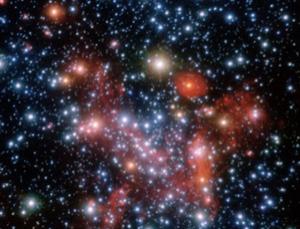
© Tansy Spinks/MillenniumAre daughters-in-law to blame for women losing the ability to reproduce with years left to live?
It flies in the face of natural selection, yet in humans it seems fixed and universal: at around age 50, not far past the midpoint of life, normal healthy women lose their capacity to bear children. Following a decade of gentle winding down, the whole reproductive system screeches to a halt. It is as though, after a few years of wearing bifocals, all women suddenly went blind.
Menopause is a mystery. It leaves women with 20, 30, perhaps even 50 years of life - squandered time in evolutionary terms, because no further genes can be passed on. Yet the selection pressure for menopause must have been strong: there are no known pockets of women around the world who do not go through it. All the evidence suggests menopause has been around a long time, and that the age at which it hits has changed little. Increased longevity seems not to have budged our closing hours. Nor, apparently, has lifestyle; it hits hunter-gatherers at pretty much the same age as hip New Yorkers.
In an attempt to explain this phenomenon, anthropologists suggest that menopause lets women see their last child through to maturity, or that it enables them to provide for their grandchildren. Both ideas make evolutionary sense, since they allow mothers to pass on more of their genes to subsequent generations. But when the numbers are crunched, they just don't seem enough to explain why women would forgo turning out a few more babies of their own. "The sums don't add up - the benefits aren't sufficient to stop breeding," says Michael Cant from the University of Exeter at Penryn, UK. "There's a missing piece of the puzzle." As a zoologist, whose main work has been in banded mongooses and paper wasps, he had an idea about what that missing piece might be. Put bluntly, he suspects that daughters-in-law could be to blame.


